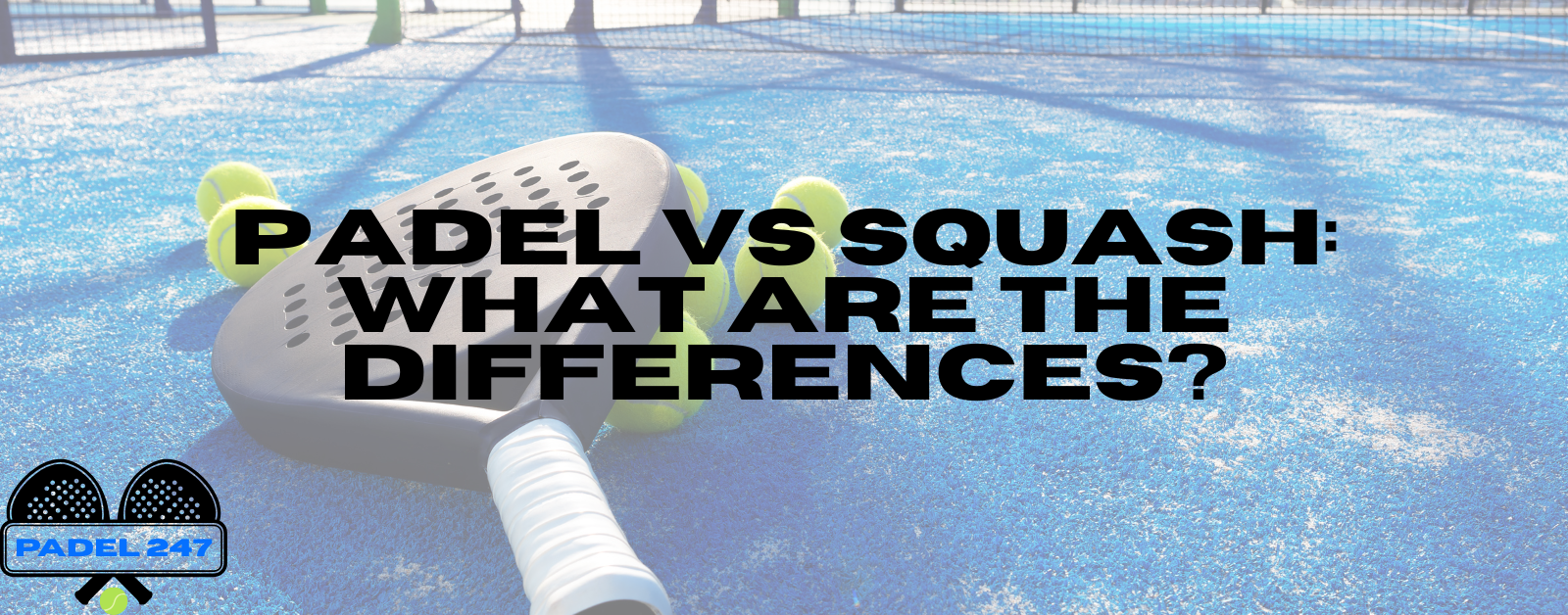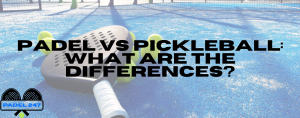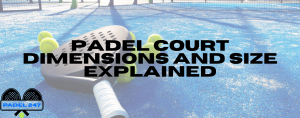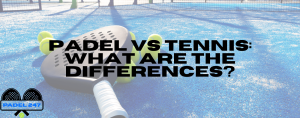Padel and squash are fast-paced racket sports played in enclosed courts with walls, but they differ in equipment, gameplay, and accessibility. Squash has long been a gym and club staple, while padel is rapidly growing in the UK and worldwide. Here’s a quick guide to how they compare.
⚡ Quick Overview: Padel vs Squash
| Padel | Squash | |
|---|---|---|
| Origins | Mexico, 1960s | England, 19th century |
| Court | ~⅓ tennis court, glass & mesh walls, indoor or outdoor | Fully enclosed indoor court with four solid walls |
| Racket | Solid, perforated, no strings | Lightweight, strung, with longer handle |
| Ball | Slightly depressurised tennis-style ball | Small rubber ball with varying bounce types |
| Format | Mainly doubles | Mainly singles (doubles less common) |
| Serving | Underarm serve | Overarm serve |
| Scoring | Tennis-style scoring (15, 30, 40, deuce) | Point-a-rally scoring to 11 |
| Gameplay Style | Slower rallies, tactical, social | Fast-paced, intense, fitness-focused |
| Accessibility | Easy to learn, beginner-friendly | Steeper learning curve, more technical |
| Physical Demand | Moderate cardio, focus on reflexes and coordination | High cardio, explosive movement, very demanding |
| Social Aspect | Highly social, community-focused | More individual, competitive in nature |
Origins & Popularity
Padel originated in Mexico in the 1960s and quickly gained popularity in Spain and Latin America.
Over the last decade, it has exploded across Europe, particularly in Spain, Italy, and the UK, making it one of the fastest-growing sports in the world. Squash, by contrast, dates back to 19th-century England and developed as an indoor sport played in schools and clubs.
It became a well-established global game, especially in the UK, Egypt, and North America, where it remains popular today.
Court & Playing Environment
A padel court is about a third of the size of a tennis court and is enclosed with glass and mesh walls, making it suitable for both indoor and outdoor play. Squash courts, on the other hand, are always indoors and completely surrounded by four walls.
While both sports incorporate the walls into play, squash relies on them much more heavily, creating a faster and more intense environment.
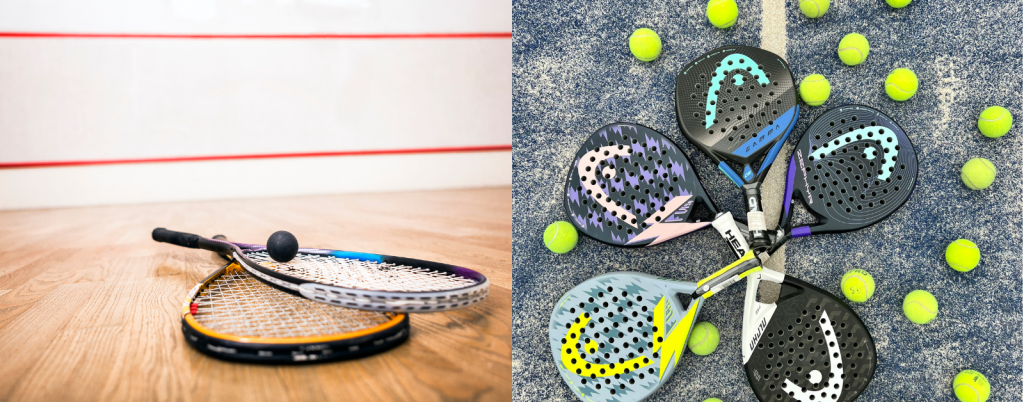
Equipment
Padel is played with a solid, perforated racket without strings, which is slightly heavier and shorter than a squash racket, providing control and reducing vibration.
Squash rackets are lightweight, strung, and built for speed and precision, with a longer handle and larger head size. The balls also differ significantly, as Padel uses a depressurised tennis-style ball, while squash uses a much smaller rubber ball that comes in different varieties depending on bounce and speed.
Gameplay & Scoring
Padel is mainly played in doubles, with underarm serves and a scoring system that mirrors tennis (15, 30, 40, deuce). The use of walls creates longer, more tactical rallies rather than just power-based exchanges.
Squash, by comparison, is most commonly played one-on-one, with overarm serves and a point-a-rally scoring system up to 11. The smaller space and continuous wall play make squash far more physically intense and fast-paced.
Accessibility & Learning Curve
Padel is widely regarded as one of the easiest racket sports to learn, thanks to its slower ball speed, doubles format, and forgiving use of walls that keep rallies going.
Squash, however, has a steeper learning curve, with its tighter court, quicker ball, and demand for sharp positioning and timing making it more challenging for beginners.
Physical Demands & Fitness
Playing padel provides a solid workout but focuses more on reflexes, coordination, and positioning than pure cardiovascular effort.
Squash, in contrast, is considered one of the most physically demanding racket sports, requiring constant sprinting, lunging, and explosive movement that deliver a high-intensity workout.
Social Aspect
Padel thrives on its doubles format, making it a social and inclusive game often played in groups of friends or families. Squash is more commonly played as singles, creating a competitive and individual challenge, though doubles squash does exist in some clubs.
Costs & Accessibility
Padel is still developing in many countries, which means courts may not be as widely available, though the sport is expanding quickly with new venues opening across Europe.
Squash, on the other hand, is already well established, with courts found in gyms and sports clubs around the world. Both sports are relatively affordable to play, with rackets and balls at accessible price points, though squash courts are often tied to gym memberships.
Conclusion & Summary
Both padel and squash offer unique experiences. Padel is growing rapidly as an accessible, social, and enjoyable sport that players of all levels can pick up quickly.
Squash, with its long tradition, remains one of the most intense racket sports, delivering a high-energy workout and a fast-paced challenge. If you want a social, tactical game, padel may be your best fit. If you crave intensity and competition, squash could be the sport for you.
Either way, both are excellent choices for staying active and having fun on the court.
